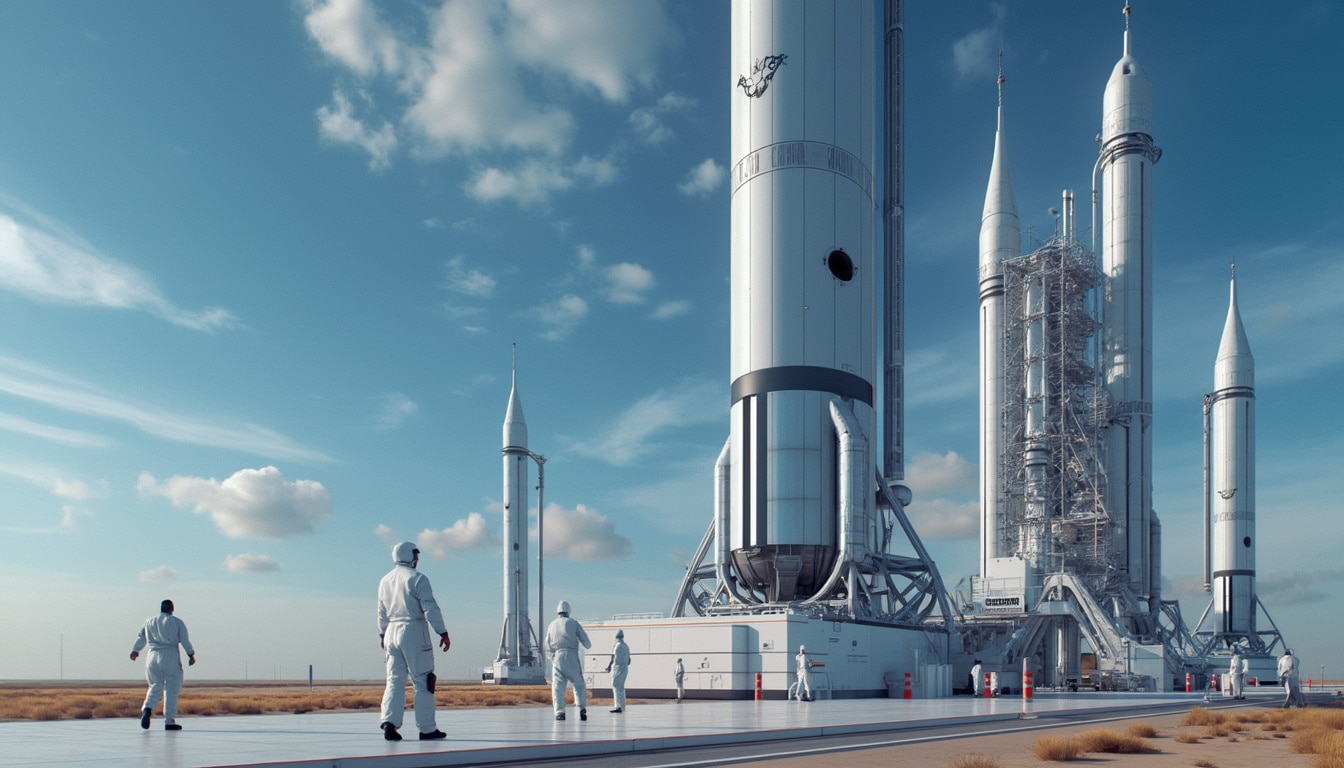The rise of private aerospace companies has transformed the landscape of space exploration, drawing the attention of both government entities and the global market. As SpaceX continues to dominate the industry with its ambitious projects and innovative technologies, Europe has begun to respond with its own initiatives, notably through the development of a competitor that seeks to challenge Musk’s reign. This burgeoning rivalry not only underscores the increasing demand for satellite connectivity but also highlights the geopolitical shifts influencing investment in space technologies.
The emergence of alternatives to SpaceX has become a focal point within Europe. Organizations such as Arianespace and collaborations involving Northrop Grumman and Boeing indicate a significant pivot towards developing indigenous capabilities that can match or surpass the operational efficiency of SpaceX. The ambition extends beyond simply matching capabilities; it involves positioning Europe as a key player in the global space economy.
Europe’s Space ambitions and Challenges
Europe’s ambitions in space technology have evolved significantly over the past decade. Traditionally dominated by national programs, the push for a unified European approach has gained momentum. The establishment of the European Space Agency (ESA) has been pivotal in coordinating efforts to develop competitive launch services and satellite systems. With the eyes of the world on SpaceX, Europe realizes that a robust and independent space strategy is crucial.

Competitive Landscape
The competitive landscape has seen the emergence of various players vying for dominance alongside SpaceX. Blue Origin, founded by Amazon’s Jeff Bezos, aims to provide reliable access to space with a focus on sustainability. In parallel, Virgin Galactic seeks to revolutionize space tourism, attracting new investors and generating public interest in spaceflight. Meanwhile, Rocket Lab offers small satellite launch services, catering to a niche yet growing market sector.
Among these competitors, the emergence of Relativity Space and Sierra Nevada Corporation signifies a shift towards innovative manufacturing processes, highlighting the adoption of 3D printing technology to streamline satellite and rocket production. This is a vital step that many believe could enhance efficiency, reduce costs, and ultimately lead to greater competitive pricing against established giants like SpaceX and Arianespace.
Investment and Collaboration
A critical aspect of Europe’s strategy involves significantly increasing investments in its own space technologies. The European Commission has begun to realize the necessity of financial backing not just from governments but also through partnerships with private industry leaders. As seen in various funding initiatives, the aim is to establish a sustainable financial ecosystem that can support ambitious projects such as IRIS², touted as a contender to SpaceX’s Starlink.
Public-Private Partnerships
Public-private partnerships have emerged as essential vehicles for advancing technological capabilities and achieving strategic goals in the aerospace sector. The collaboration between the ESA and private firms offers a robust framework for developing cutting-edge satellite technologies, optimizing launch operations, and enhancing research capabilities.
Moreover, the focus extends beyond just technological capabilities. The narrative surrounding the global space economy stresses that these partnerships need to address geopolitical considerations. The European Union aims to reduce its reliance on non-European providers by fostering a new ecosystem built on cooperation and innovation. This has led to discussions about how emerging competitors should align their product offerings with the requirements of government contracts.
The Future of European Space Programs
As the European space sector prepares to elevate its status on the global stage, the integration of new technologies and collaborative efforts will be paramount. The advent of programs like IRIS² indicates a recognition of the need for resilience against external pressures, particularly those posed by established players such as SpaceX.
Exploring New Markets
Capitalizing on new markets presents an extraordinary opportunity for European firms. The growth of satellite internet services is an area ripe for investment as societies across the globe seek high-speed connectivity. As such, Europe’s ambitious 11 billion euro Iris2 satellite project is expected to position the continent as a leader in providing global broadband coverage.
The landscape of satellite communication is changing rapidly, challenging incumbents and encouraging the rise of new technologies. Moreover, fostering a culture of innovation will greatly impact the future landscape, promoting advancements in areas like artificial intelligence and machine learning, subsequently enhancing satellite capabilities.
Geopolitical Implications for Space Dominance
As SpaceX establishes its influence in the aerospace sector, the geopolitical implications of its success resonate far and wide. The dominance of American companies is prompting European nations to rethink their investment strategies in space technologies to ensure their competitiveness. The potential implications of these developments lead to questions about technology transfer, defense capabilities, and collaboration with allies.
Defense and Strategic Collaborations
With military interests intertwined with space exploration, European nations find themselves compelled to enhance their capacities in national defense technologies. Utilizing satellites for surveillance, reconnaissance, and secure communications reveals the necessity of robust launch capabilities. Collaborations with key players in the aerospace industry, including Lockheed Martin and Northrop Grumman, signal a shift toward emphasizing the strategic importance of space capabilities.
The emphasis on defense-related technologies further complicates the competitive landscape. The transfer of knowledge and technologies from commercial initiatives into governmental applications has become increasingly vital, setting the stage for pronounced changes in defense policies and military capacity building in Europe.
Evaluating Future Competitors
The European push to establish competitive alternatives to SpaceX gives rise to new participants eager not just to survive, but to thrive in this rich and expanding landscape. New firms are capitalizing on technological advancements that can potentially disrupt the established order, thereby opening doors to new avenues of innovation and collaboration.

Startups Leading the Charge
New startups are emerging that focus on cutting-edge technologies, such as propulsion systems and launch vehicle design, challenging incumbents by bringing fresh ideas and methodologies to the industry. Understanding the motivation behind their ambitions can significantly inform the strategic options available to more established players.
Companies like Rocket Lab and Relativity Space continue to build upon their unique strategies that have positioned them favorably against larger counterparts. These emergent firms are finding ways to leverage technology and strategic partnerships to drive growth while carving out a substantial niche in a market increasingly defined by high-performance criteria.
As the space race for connectivity and exploration accelerates, the intricate interplay of innovation, investment, and geopolitical considerations will shape the future of the aerospace landscape. Aware of these dynamics, Europe must galvanize its efforts, not just for competition, but to ensure that the continent remains a vital part of the unfolding story of space exploration.
| Company | Focus Area | Major Projects |
|---|---|---|
| SpaceX | Launch Services, Satellite Communication | Starlink, Crew Dragon, Falcon Heavy |
| Blue Origin | Reusable Rockets, Space Tourism | New Shepard, New Glenn |
| Virgin Galactic | Space Tourism | SpaceShipTwo, Spaceship III |
| Rocket Lab | Small Satellite Launch Services | Electron Rocket, Photon Satellite |
| Arianespace | Launch Services | Ariane 6, Vega-C |
| Relativity Space | 3D Printed Rockets | Terran 1 |
| Sierra Nevada Corporation | Cargo and Crew Services | Dream Chaser |




Leave a Reply